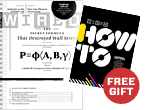
Once you upload your favorite looks, Cloth can help you decide what to wear based on the weather. Image: Cloth
The only weather app I’ve ever wanted is one that tells me what I should wear each day based on the conditions outside. That app is finally here — and it didn’t start out as a weather app at all.
In its original incarnation, Cloth simply let you photograph and catalog different outfits from your wardrobe. You could also share your favorite items to social media — you know, for those days when you’re feeling particularly fabulous. It was a great tool for budding fashionistas, but perhaps not a must-have for the less fashion-inclined. Starting Wednesday, though, the app will include integration with Wunderground for real-time, location-based weather stats.
Here’s how it works: Cloth will automatically tag uploaded outfits based on the day’s current weather conditions, generalized into sections like rainy, warm, or hot. When those same conditions come up again, you can pull up combinations from your closet that work for that day’s weather. It takes all the guess work out of deciding to wear pants or shorts, or if it’s too warm out for that wool shirt.
“The app’s been incredibly useful since New York’s weather has been so topsy turvy lately,” Seth Porges, the app’s co-creator (and longtime tech-writer), told Wired. “It’ll be 50 degrees one day and 80 the next.” He and his girlfriend decided to create the app after he noticed her taking photos of her favorite outfits, and saving them willy nilly in her iPhone’s photo album.
The Cloth app will be free when it’s back in the App Store Wednesday, with the new weather integration feature (bundled with advanced photo editing features) available as a $1 in-app purchase.


















